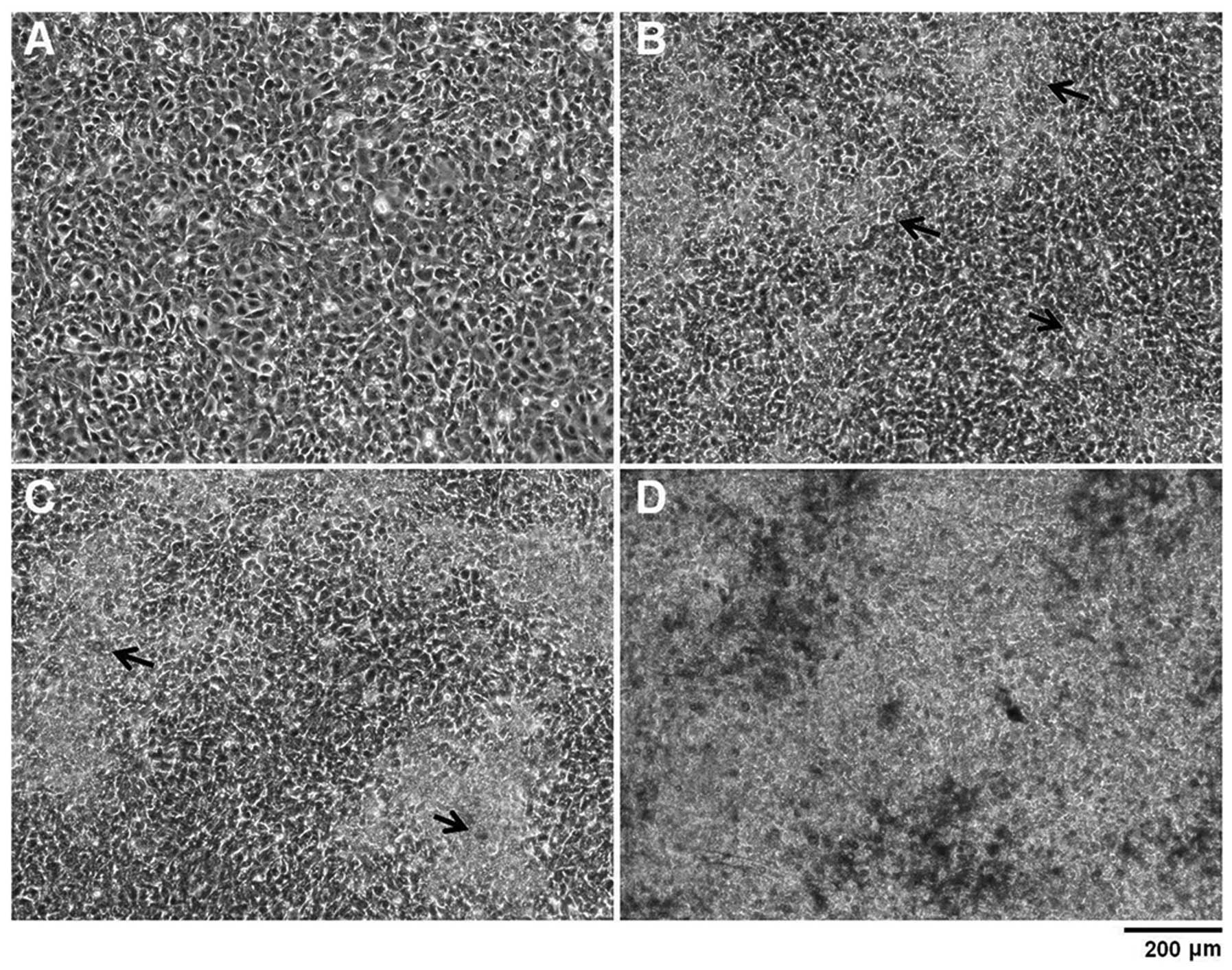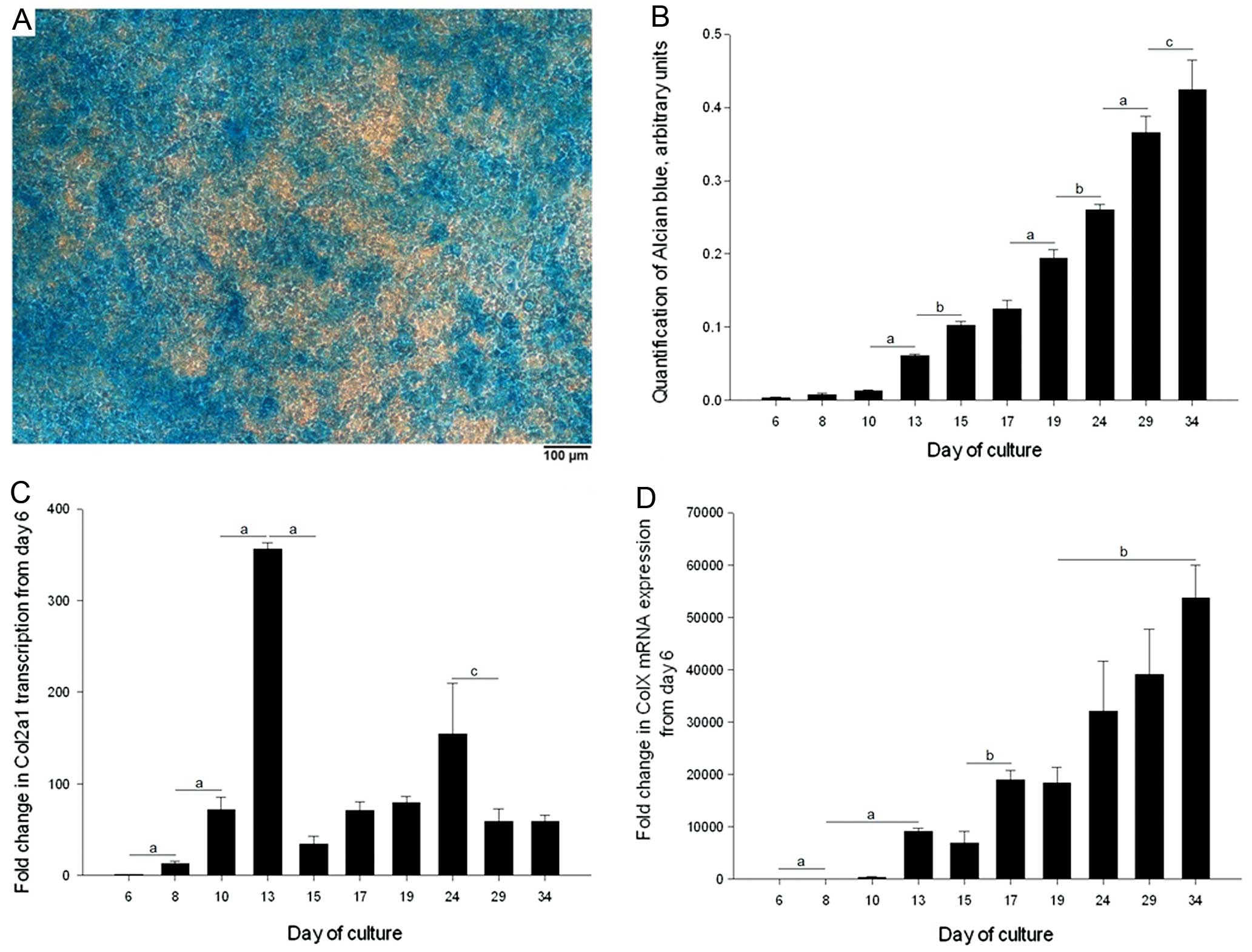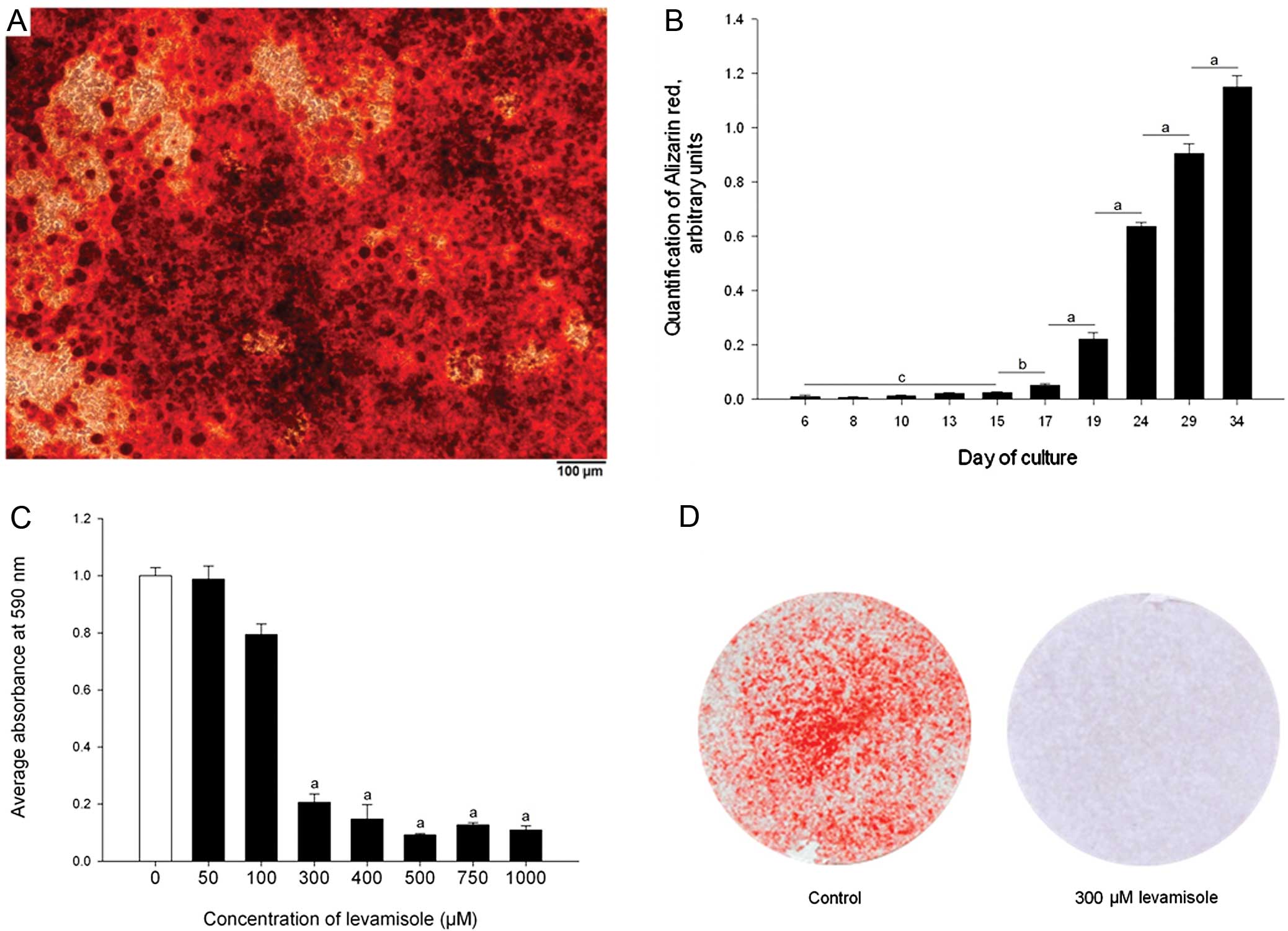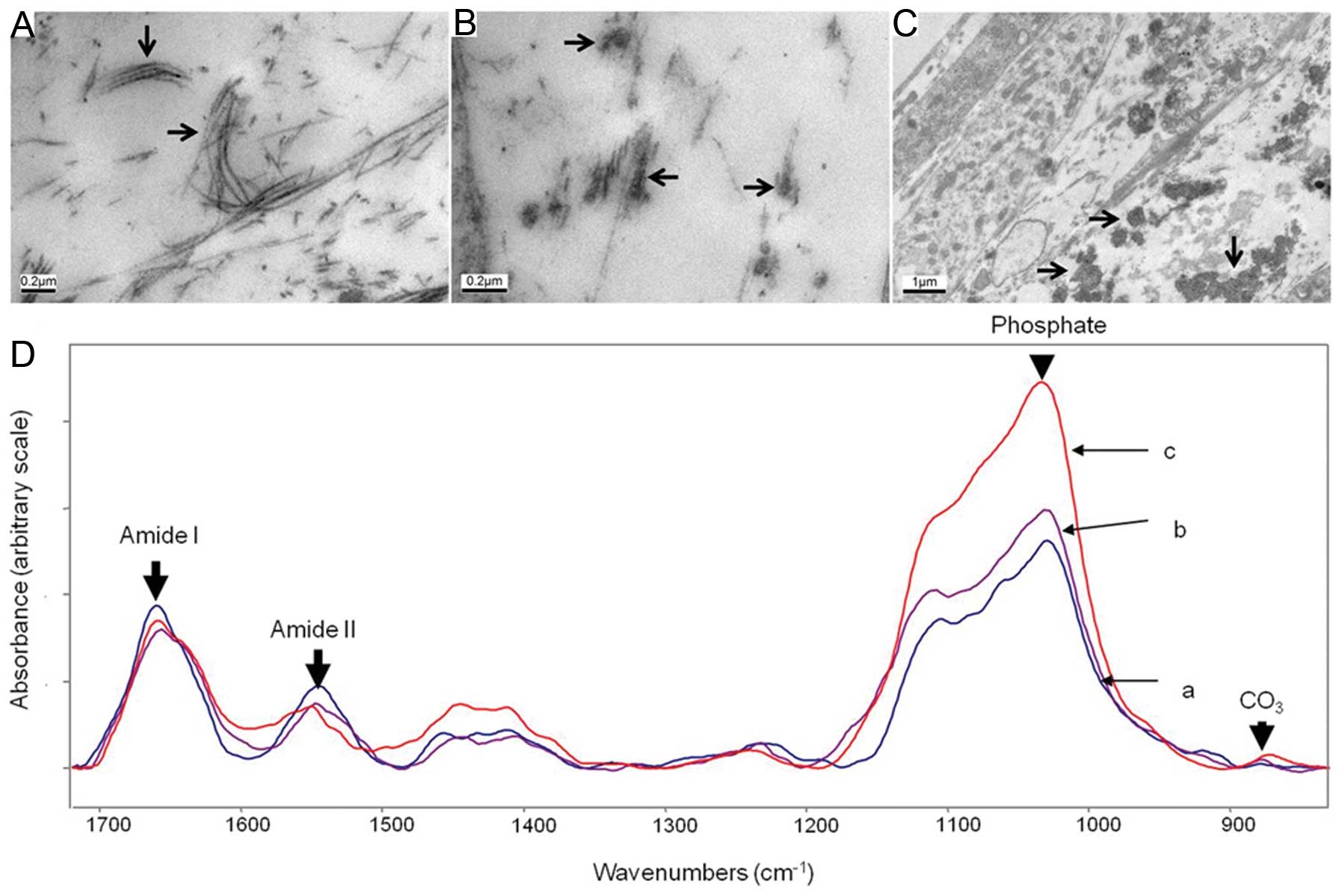|
1.
|
HM KronenbergDevelopmental regulation of
the growth plateNature423332336200310.1038/nature0165712748651
|
|
2.
|
T AtsumiY MiwaK KimataY IkawaA
chondrogenic cell line derived from a differentiating culture of
AT805 teratocarcinoma cellsCell Differ
Dev30109116199010.1016/0922-3371(90)90079-C2201423
|
|
3.
|
C ShukunamiK IshizekiT AtsumiY OhtaF
SuzukiY HirakiCellular hypertrophy and calcification of embryonal
carcinoma-derived chondrogenic cell line ATDC5 in vitroJ Bone Miner
Res1211741188199710.1359/jbmr.1997.12.8.11749258747
|
|
4.
|
D MagneG BluteauC FaucheuxG PalmerC
Vignes-ColombeixP PiletT RouillonJ CaverzasioP WeissG DaculsiJ
GuicheuxPhosphate is a specific signal for ATDC5 chondrocyte
maturation and apoptosis-associated mineralization: possible
implication of apoptosis in the regulation of endochondral
ossificationJ Bone Miner
Res1814301442200310.1359/jbmr.2003.18.8.1430
|
|
5.
|
T FujitaT MeguroN IzumoC YasutomiR
FukuyamaH NakamutaM KoidaPhosphate stimulates differentiation and
mineralization of the chondroprogenitor clone ATDC5Jpn J
Pharmacol85278281200110.1254/jjp.85.27811325020
|
|
6.
|
FM AltafTM HeringNH KazmiJU YooB
JohnstoneAscorbate-enhanced chondrogenesis of ATDC5 cellsEur Cell
Mater126470200617096313
|
|
7.
|
MR CoeTA SummersSJ ParsonsAL BoskeyG
BalianMatrix mineralization in hypertrophic chondrocyte cultures.
Beta glycerophosphate increases type X collagen messenger RNA and
the specific activity of pp60c-src kinaseBone Miner18911061992
|
|
8.
|
T MatsuzawaHC AndersonPhosphatases of
epiphyseal cartilage studied by electron microscopic cytochemical
methodsJ Histochem Cytochem19801808197110.1177/19.12.8014335252
|
|
9.
|
VE MacRaeC FarquharsonSF AhmedThe
restricted potential for recovery of growth plate chondrogenesis
and longitudinal bone growth following exposure to pro-inflammatory
cytokinesJ Endocrinol189319328200610.1677/joe.1.0660916648299
|
|
10.
|
HC OwenJN MinerSF AhmedC FarquharsonThe
growth plate sparing effects of the selective glucocorticoid
receptor modulator, AL-438Mol Cell
Endocrinol264164170200710.1016/j.mce.2006.11.00617182172
|
|
11.
|
VE MacRaeMG DaveyL McTeirS NarisawaMC
YadavJL MillanC FarquharsonInhibition of PHOSPHO1 activity results
in impaired skeletal mineralization during limb development of the
chickBone4611461155201010.1016/j.bone.2009.12.01820053388
|
|
12.
|
S Gourion-ArsiquaudPA WestAL BoskeyFourier
transform-infrared microspectroscopy and microscopic imagingMethods
Mol Biol455293303200810.1007/978-1-59745-104-8_2018463826
|
|
13.
|
BH VanAlkaline phosphatase. I. Kinetics
and inhibition by levamisole of purified isoenzymes from humansClin
Chem229729761976
|
|
14.
|
AL BoskeyR RoyCell culture systems for
studies of bone and tooth mineralizationChem
Rev10847164733200810.1021/cr078247318800815
|
|
15.
|
LC HughesCW ArcherI ap GwynnThe
ultrastructure of mouse articular cartilage: collagen orientation
and implications for tissue functionality. A polarised light and
scanning electron microscope study and reviewEur Cell
Mater968842005
|
|
16.
|
TM TemuKY WuPA GruppusoC PhornphutkulThe
mechanism of ascorbic acid-induced differentiation of ATDC5
chondrogenic cellsAm J Physiol Endocrinol
Metab299E325E334201020530736
|
|
17.
|
PS LeboyL VaiasB UschmannE GolubSL AdamsM
PacificiAscorbic acid induces alkaline phosphatase, type X
collagen, and calcium deposition in cultured chick chondrocytesJ
Biol Chem26417281172861989
|
|
18.
|
M RohdeH MayerExocytotic process as a
novel model for mineralization by osteoblasts in vitro and in vivo
determined by electron microscopic analysisCalcif Tissue
Int80323336200710.1007/s00223-007-9013-517406769
|
|
19.
|
G GronowiczFN WoodielMB McCarthyLG RaiszIn
vitro mineralization of fetal rat parietal bones in defined
serum-free medium: effect of beta-glycerol phosphateJ Bone Miner
Res4313324198910.1002/jbmr.56500403052763870
|
|
20.
|
M BorgersThe cytochemical application of
new potent inhibitors of alkaline phosphatasesJ Histochem
Cytochem21812824197310.1177/21.9.8124741290
|
|
21.
|
LF BonewaldSE HarrisJ RosserMR DallasSL
DallasNP CamachoB BoyanA Boskeyvon Kossa staining alone is not
sufficient to confirm that mineralization in vitro represents bone
formationCalcif Tissue
Int72537547200310.1007/s00223-002-1057-y12724828
|
|
22.
|
LN WuBR GengeDG DunkelbergerRZ LeGerosB
ConcannonRE WuthierPhysicochemical characterization of the
nucleational core of matrix vesiclesJ Biol
Chem27244044411199710.1074/jbc.272.7.44049020163
|
|
23.
|
AI CaplanBone developmentCiba Found
Symp1363211988
|
|
24.
|
AL BoskeySB DotyD StinerI BindermanViable
cells are a requirement for in vitro cartilage calcificationCalcif
Tissue Int5817718519968852573
|
|
25.
|
HC AndersonJB SipeL HessleR DhanyamrajuE
AttiNP CamachoJL MillanImpaired calcification around matrix
vesicles of growth plate and bone in alkaline phosphatase-deficient
miceAm J
Pathol164841847200410.1016/S0002-9440(10)63172-014982838
|
|
26.
|
LF HuitemaPR van WeerenBW van BalkomT
VisserCH van de LestA BarneveldJB HelmsAB VaandragerSoluble factors
released by ATDC5 cells affect the formation of calcium phosphate
crystalsBiochim Biophys
Acta177411081117200710.1016/j.bbapap.2007.06.00517669701
|
|
27.
|
GR SauerRE WuthierFourier transform
infrared characterization of mineral phases formed during induction
of mineralization by collagenase-released matrix vesicles in vitroJ
Biol Chem26313718137241988
|
|
28.
|
RZ LeGerosPreparation of octacalcium
phosphate (OCP): a direct fast methodCalcif Tissue
Int37194197198510.1007/BF025548413924374
|
|
29.
|
EP PaschalisO JacenkoB OlsenB
deCrombruggheAL BoskeyThe role of type X collagen in endochondral
ossification as deduced by Fourier transform infrared microscopy
analysisConnect Tissue
Res35371377199610.3109/030082096090292149084677
|















